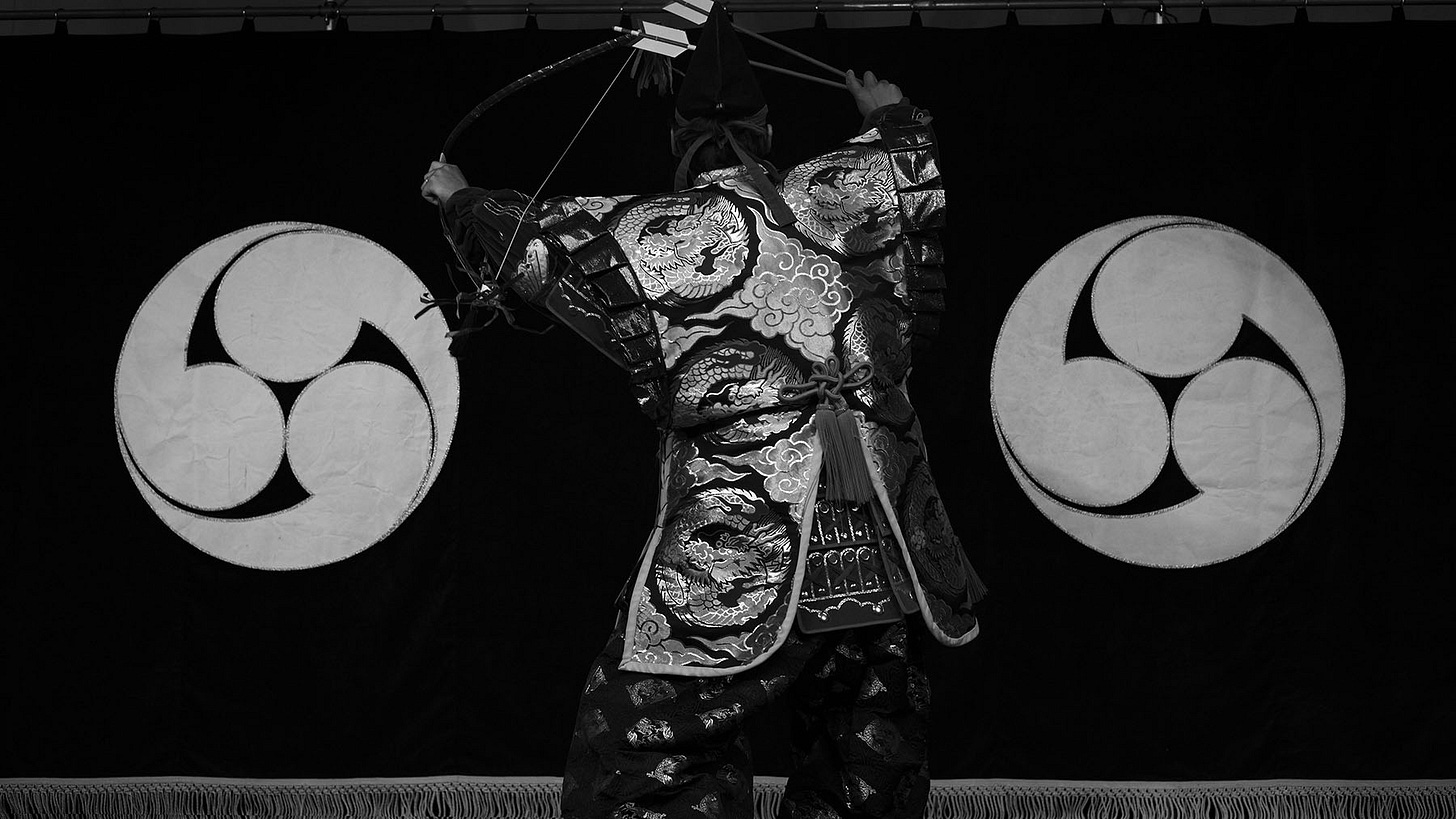Examining Regional Cultural Differences Through Kagura
What Different Tempos of Izumo Kagura and Iwami Kagura Reveal
Today, I am in the western part of Shimane Prefecture. This area of western Shimane was once known as “Iwami Province” (石見国, Iwami-no-kuni), while the region around Izumo Taisha Shrine was called “Izumo Province” (出雲国, Izumo-no-kuni). At first glance, since these two areas aren’t very far apart geographically, one might think there wouldn’t be significant cultural differences between them, but during this journey, as I listen to local Iwami people talk, the existence of entirely distinct cultural spheres becomes apparent. For instance, people from Iwami say that when they hear the Izumo dialect spoken, it’s hard for them even to understand what is being said, and they also mention significant differences in temperament.
Certainly, looking from the perspective of natural landscapes, considerable distinctions have emerged between the basin-like region of Izumo, featuring large lakes such as Lake Shinji, and Iwami Province, where fishing villages stretch along the coastline backed immediately by deep mountain ranges. In terms of language, although much of the difference has diminished today due to the spread of standard Japanese (標準語, Tokyo dialect) through media, many traces of cultural distinctions still remain.
One prominent example is “Kagura” (神楽). Japanese Kagura has its origins in the “Ama-no-Iwato myth” (天岩戸神話), as recorded in ancient texts such as Kojiki and Nihon Shoki. It is widely recognized as a traditional performing art dedicated to the kami during shrine festivals. Various styles of Kagura have been preserved across Japan, and Shimane Prefecture, long known as the “Land of the kami,” has developed unique regional Kagura traditions, including Izumo Kagura in the eastern region, Iwami Kagura in the west, and Oki Kagura on the Oki Islands.
A crucial point highlighting the significant difference between Izumo Kagura and Iwami Kagura is the tempo (“choshi,” 調子) of their performances. Izumo Kagura, passed down in eastern Shimane Prefecture, is based on a majestic and solemn rhythm known as “Rokuchoshi” (六調子, literally “six-beat tempo”). In contrast, Iwami Kagura features bold, dynamic dances characterized by a much faster-paced “Hatchoshi” (八調子, literally “eight-beat tempo”) rhythm, creating a dramatically different impression. Along Shimane Prefecture’s coast, the boundary between the Rokuchoshi and Hatchoshi traditions lies around the city of Ōda, but intriguingly, upon entering the mountainous areas, even within Iwami, the Rokuchoshi tradition from Izumo reappears. This suggests historical movements of ancient Izumo tribes, traceable through the Kagura style, making this region profoundly intriguing from a cultural-historical perspective.



